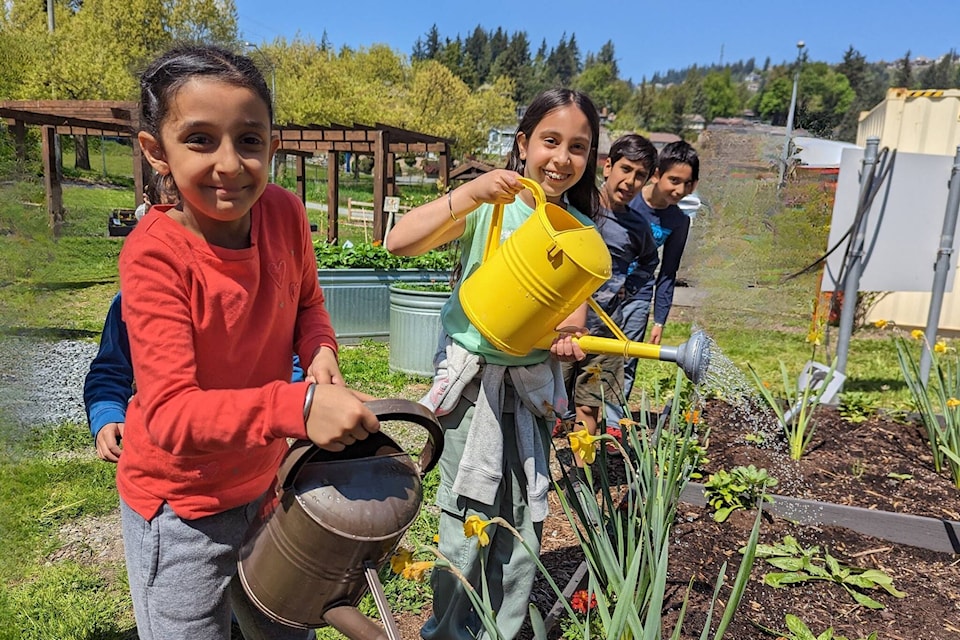The future of agriculture lies in the hands of young people.
“When [students] work with it, when they grow it, when they taste it, there’s more understanding and more self-satisfaction,” explained Pat Tonn, the executive director of BC Agriculture in the Classroom Foundation (BCAITC), who also has over 20 years of experience working with the BC Ministry of Agriculture and helped develop programs like 4-H.
The non-profit gives students hands-on experiences with agriculture and food, using the dozen or so programs they’ve created. One program brings fresh, B.C.-grown, seasonal fruits and vegetables straight to the classrooms, allowing students to learn where their food comes from, who some of the farmers are, what they can do with their food and the wide varieties of apples, for example. The program, called BC School Fruit and Vegetable Nutritional Program, reaches over 1,400 schools, K-12.
Another program, Take a Bite BC, provides B.C.-grown food (beyond produce) to Grade 11 and 12 culinary students who aspire to become chefs. Students can make their classmates creative meals using healthy ingredients donated by B.C. farmers, which reaches over 60 schools.
Career opportunities for people interested in agriculture go beyond farmers and chefs, including machinery salespeople, veterinarians or greenhouse operators, said Tonn.
“What most recently has inspired students is the technology … They’re excited about drones.”
Of course, it depends on the minds of the students and their future goals, said Tonn. While some students are interested in using drones to survey crops, robots assisting in milking animals and being able to run a greenhouse from their cell phones, others seek more traditional ways.
“Some young people are not going to farm the same way their fathers and mothers did, because there are new tools available to them and they think differently. They’ve been educated differently. They’ve gone through different life experiences.”
Other young people want to keep things small, “close to the land,” and maintain that community feel, Tonn explained.
“That’s another way of thinking … They’re both good. We need both of them in our province, but it depends on the way you think and what type of business you want to run.”
Tonn noted the challenges young farmers face, including distribution–especially to more rural communities–the financial cost of starting a farm and, simply, the hard work.
“I mean, anything that you want to make money at or be successful at is going to take some work, bottom line … You have to have a passion for it, believe in the land and opportunity.”
This is where BCAITC steps in–by giving students hands-on experience within agriculture, farming and food, and exploring its many avenues, including how to network with partners.
“I’m most excited for the diversity available to young people today. They can have so many aspirations in whatever field of study and they can be successful in agriculture. That’s inspiring to me and being able to teach young people and see those light bulbs go off. They can do that in a small community or they can do that in a city.”
The beautiful thing about agriculture is that it not only allows students to connect with their food and land but also with each other, as they grow crops and eat together.
“It builds communities … When you grow a crop of strawberries with your friends and then you eat them.”
Tonn encouraged young people to seek further education in those around them.
“There are so many people willing to lend their hand, lend their wisdom and even, in some cases, their farm to people interested in agriculture. So take advantage of those people who want to be mentors.”
Learn more about what BCAITC has to offer by visiting bcaitc.ca.
@kimakimberlin
kim.kimberlin@blackpress.ca
Like us on Facebook and follow us on Twitter



